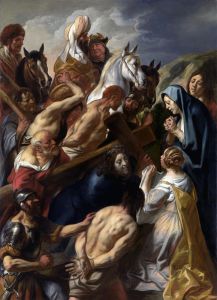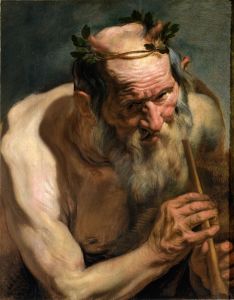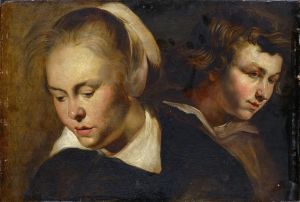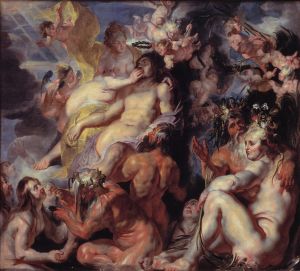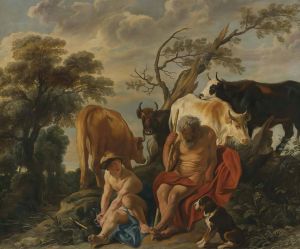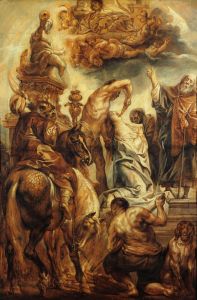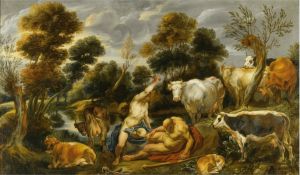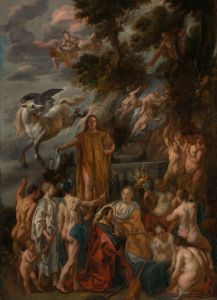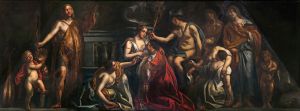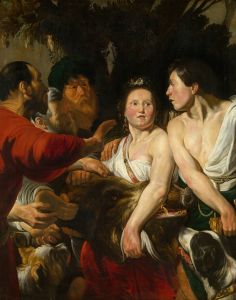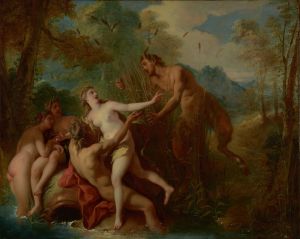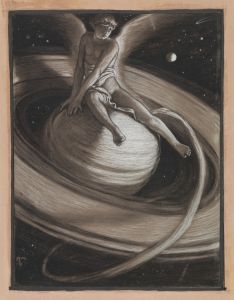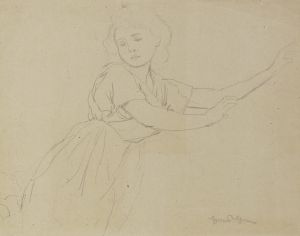
Mercury playing Argus to sleep with his flute, with Io transformed into a white heifer
A hand-painted replica of Jacob Jordaens’s masterpiece Mercury playing Argus to sleep with his flute, with Io transformed into a white heifer, meticulously crafted by professional artists to capture the true essence of the original. Each piece is created with museum-quality canvas and rare mineral pigments, carefully painted by experienced artists with delicate brushstrokes and rich, layered colors to perfectly recreate the texture of the original artwork. Unlike machine-printed reproductions, this hand-painted version brings the painting to life, infused with the artist’s emotions and skill in every stroke. Whether for personal collection or home decoration, it instantly elevates the artistic atmosphere of any space.
Jacob Jordaens, a prominent Flemish Baroque painter, created the artwork "Mercury playing Argus to sleep with his flute, with Io transformed into a white heifer." This painting is a vivid representation of a mythological scene derived from Ovid's "Metamorphoses," a classical text that has inspired countless artists throughout history.
The painting illustrates a story involving the Roman god Mercury, known as Hermes in Greek mythology, and Argus Panoptes, a giant with a hundred eyes. According to the myth, Jupiter (Zeus in Greek mythology) transformed his lover Io into a white heifer to protect her from his jealous wife, Juno (Hera). To ensure Io's safety, Juno assigned Argus, whose many eyes allowed him to remain ever-watchful, to guard her. In response, Jupiter dispatched Mercury to rescue Io. Mercury, renowned for his cunning and eloquence, used his musical talents to lull Argus to sleep, ultimately leading to Argus's demise and Io's liberation.
Jordaens's painting captures the moment Mercury plays his flute to enchant Argus. The composition is dynamic, with Mercury depicted in a relaxed yet focused posture, emphasizing his role as a divine trickster. Argus, meanwhile, is shown succumbing to the music, his eyes beginning to close, symbolizing the loss of his vigilance. The presence of Io, transformed into a heifer, adds an element of pathos to the scene, highlighting her vulnerability and the divine machinations surrounding her fate.
Jordaens was known for his ability to convey complex narratives with clarity and emotion, and this painting is no exception. His use of rich colors and dramatic contrasts enhances the tension and drama inherent in the mythological tale. The figures are rendered with a robust, almost sculptural quality, characteristic of Jordaens's style, which was influenced by his contemporaries, including Peter Paul Rubens.
This work is a testament to Jordaens's skill in interpreting classical themes, blending mythological storytelling with the Baroque emphasis on movement and emotion. It reflects the broader cultural context of the 17th century, a period when artists frequently drew upon ancient myths to explore themes of power, transformation, and the interplay between gods and mortals.
While specific details about the painting's commission or its original location are not well-documented, it remains an important example of Jordaens's oeuvre and his contribution to the Baroque tradition. Today, the painting is appreciated not only for its artistic merit but also for its ability to bring to life the timeless stories of classical mythology.





